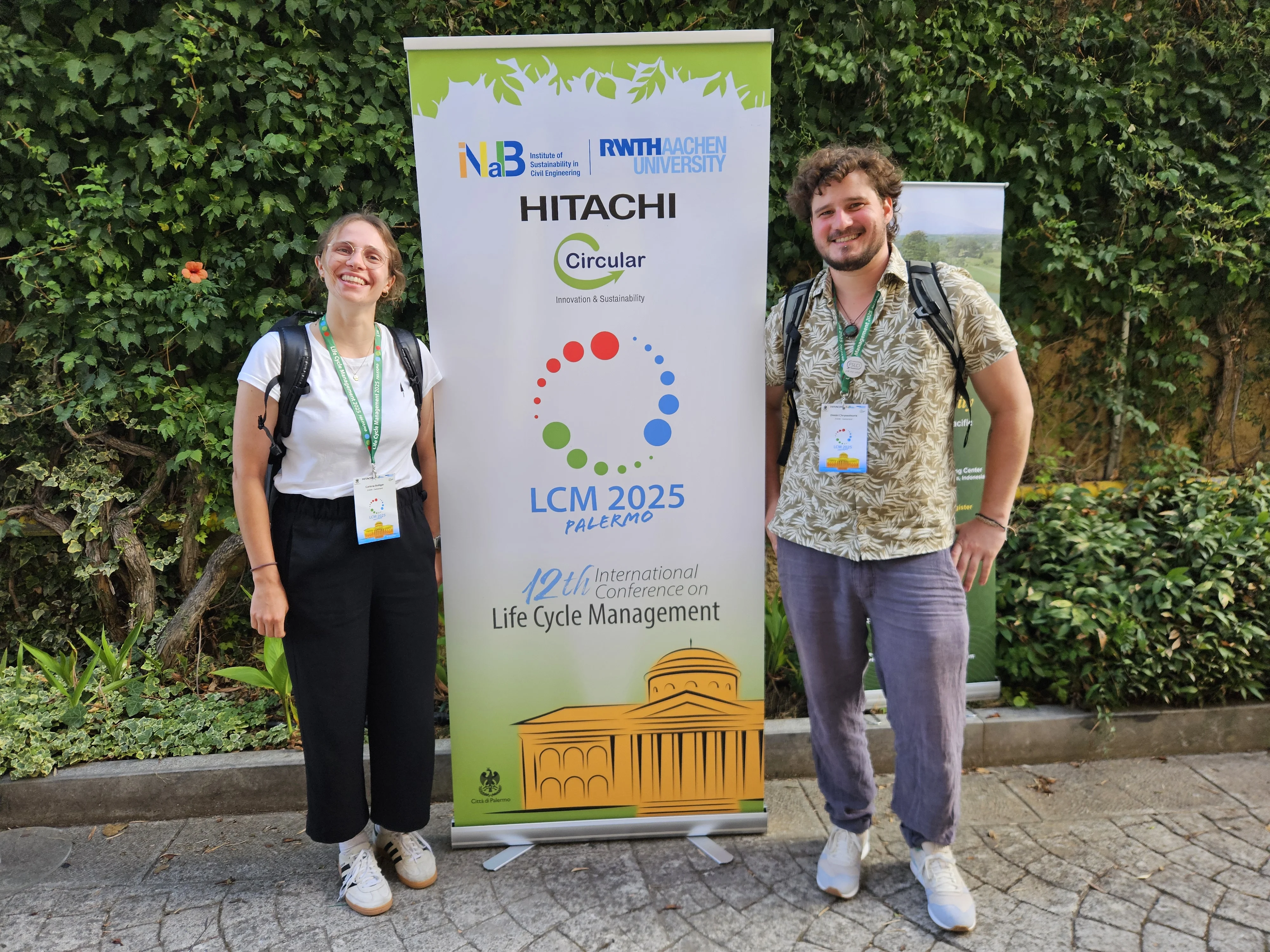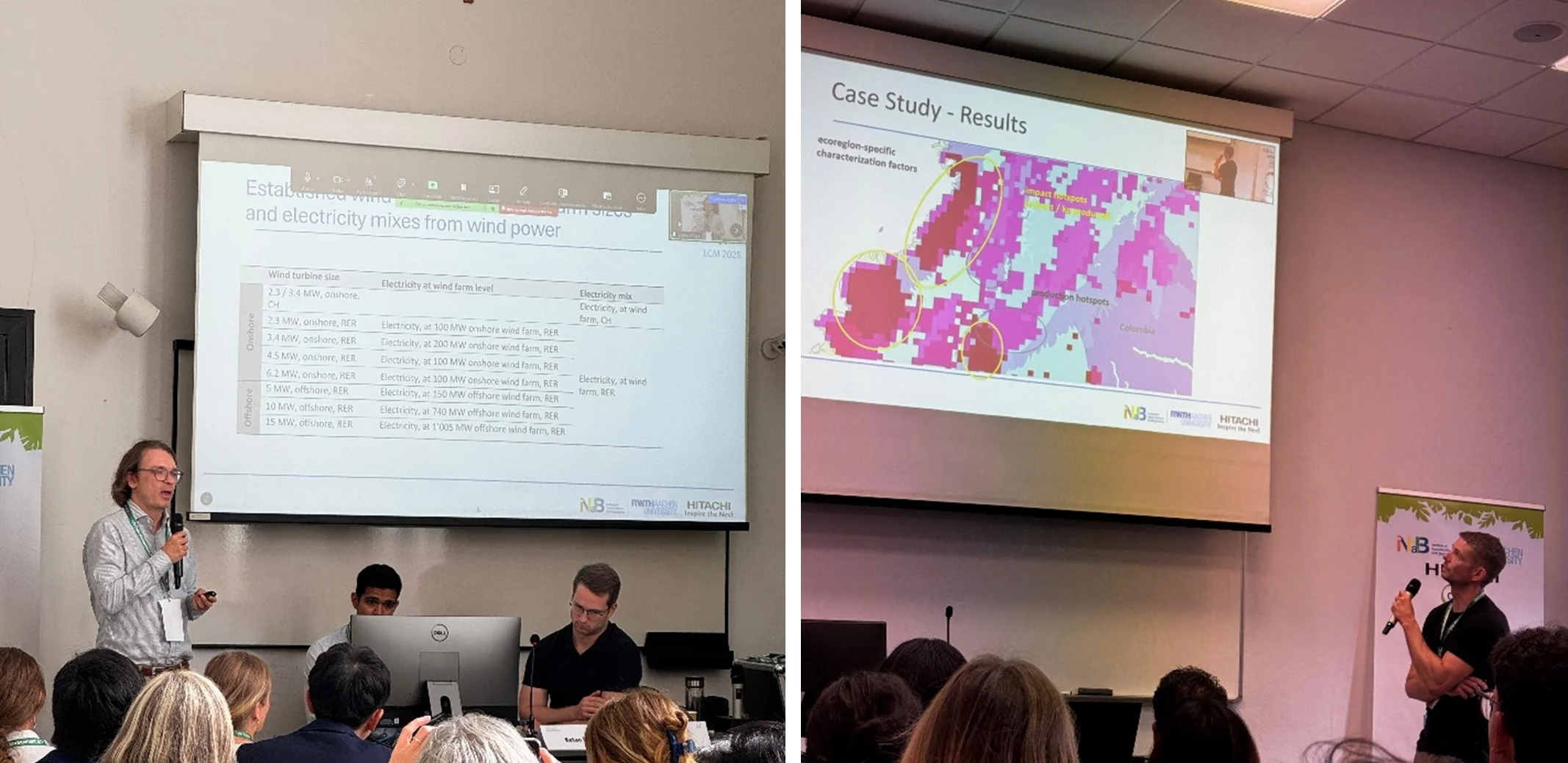Life Cycle Management Under the Sicilian Sun
From September 7th–10th, 2025, Palermo hosted the 12th International Conference on Life Cycle Management (LCM) – the world’s leading forum for life cycle experts. The event brought together 1000 of researchers, businesses, and policymakers from around the globe to discuss the latest developments and challenges in environmental, economic, and social sustainability.
Palermo, with its historic charm, bustling markets, and vibrant streets, provided a unique backdrop. The team of the ZHAW research group for Life Cycle Assessment (LCA) embraced the Sicilian vibe right from the first evening, exploring street food stalls, narrow alleyways, and late-summer heat. Staying true to the values of ecological sustainability, they traveled to Palermo by train and ferry, demonstrating that climate protection and academic work can go hand in hand.

The conference featured over 400 contributions, including keynote speeches from the European Commission, UNEP, and other international institutions. The ZHAW research group actively participated, presenting six contributions spanning food systems, renewable energy, and side stream valorization:
- Carbon Pricing in Canteens: Driving Change or Just Numbers?
Exploring the impact of CO₂ pricing on food choices in canteens - Global Biodiversity Footprints of Agricultural Production Systems
Comparing the Biodiversity Impacts of Staple and Luxury Food Crops - From Farm to Flavor
Carbon and biodiversity footprint of the global spice market - Bringing Wind Energy Models up to Speed
Updated life cycle inventory data for on- and offshore wind energy generation - One Person's Trash is Another's Treasure
Assessing the life cycle sustainability of brewery by-product valorization - Decarbonizing Maritime Shipping
Multi-fuel solid oxide fuel cell pathways for decarbonizing shipping

These contributions sparked valuable discussions and new collaborations, advancing life cycle research. And the contributions from other participating institutions sparked some interesting insights as well, instigating the exploration of new research fields:
- Social life cycle assessment: A lot of sessions were focusing on social sustainability and all the challenges facing that. Next to methodological adaptions of including racial discriminiation within sLCA, questions about harmonizing methodological guidelines arise. Problems when countries have lower 100% working hours and for that already falling in categories of medium risks.
- Albedo effect on global warming: One of the presentations was on afforestation and reforestation projects highlighted the often-overlooked role of surface albedo in climate impacts. Albedo refers to the fraction of sunlight reflected by a surface, ranging from 0 (black, no reflection) to 1 (white, full reflection). Planting trees typically darkens the land surface, lowering its albedo. This reduction can increase radiative forcing, the change in Earth’s energy balance at the top of the atmosphere, potentially offsetting or even exceeding the carbon sequestration benefits of the trees, especially in certain biomes and regions. The session stressed that location matters: in snow-covered or light-colored landscapes, such as boreal zones, the albedo effect can dominate, while in darker landscapes, like tropical forests, carbon storage is usually the stronger factor. This makes spatially explicit assessments essential for accurate climate impact evaluation. Improving land cover classifications and integrating management practices into models are critical steps to better account for albedo changes. Without these refinements, carbon crediting schemes risk overestimating the net climate benefits of tree-planting projects. (David, 2025)
- Session on textiles: Experts emphasized that the number of times a garment is worn is the single most important factor in reducing environmental impact. However, this is also the biggest source of uncertainty, as very few studies have examined real-world wear frequency. This makes defining a functional unit (FU) in life cycle assessments particularly challenging. For instance, while many studies use a product-based FU like "one T-shirt," assumptions about how often that T-shirt is worn are rarely clear. A more holistic approach would focus on use-based units, such as the environmental impact of clothing needed to dress an individual for one year, using data from actual households to reflect real wardrobe behavior (Piontek et al., 2019). The session also highlighted promising business models, including pre-order systems, recycling schemes, and rental services, which can help reduce waste and overproduction. Still, the greatest impact comes from extending the lifespan of garments through more frequent use. Regarding end-of-life options, reuse emerged as the most sustainable pathway, clearly outperforming recycling and incineration.
LCM 2025 showed that LCA research is evolving rapidly and becoming more urgent than ever. The key challenge is clear: to capture the real environmental impacts of products, services, and entire sectors, we need high-quality data and robust methodologies. Including all relevant aspects, from social dimensions to land-use impacts like albedo change is methodologically complex, but essential. The future of LCA lies in integrating diverse factors with regionalization, so decision-makers can rely on assessments that reflect reality as best as possible.
References:
David, M. (2025). Surface albedo impact on afforestation / reforestation carbon crediting projects [Dataset]. In Zenodo. CERN. doi.org/10.5281/zenodo.15036187
Piontek, F. M., Rehberger, M., & Müller, M. (2019). Development of a Functional Unit for a Product Service System: One Year of Varied Use of Clothing. In L. Schebek, C. Herrmann, & F. Cerdas (Hrsg.), Progress in Life Cycle Assessment (S. 99–104). Springer International Publishing. doi.org/10.1007/978-3-319-92237-9_11